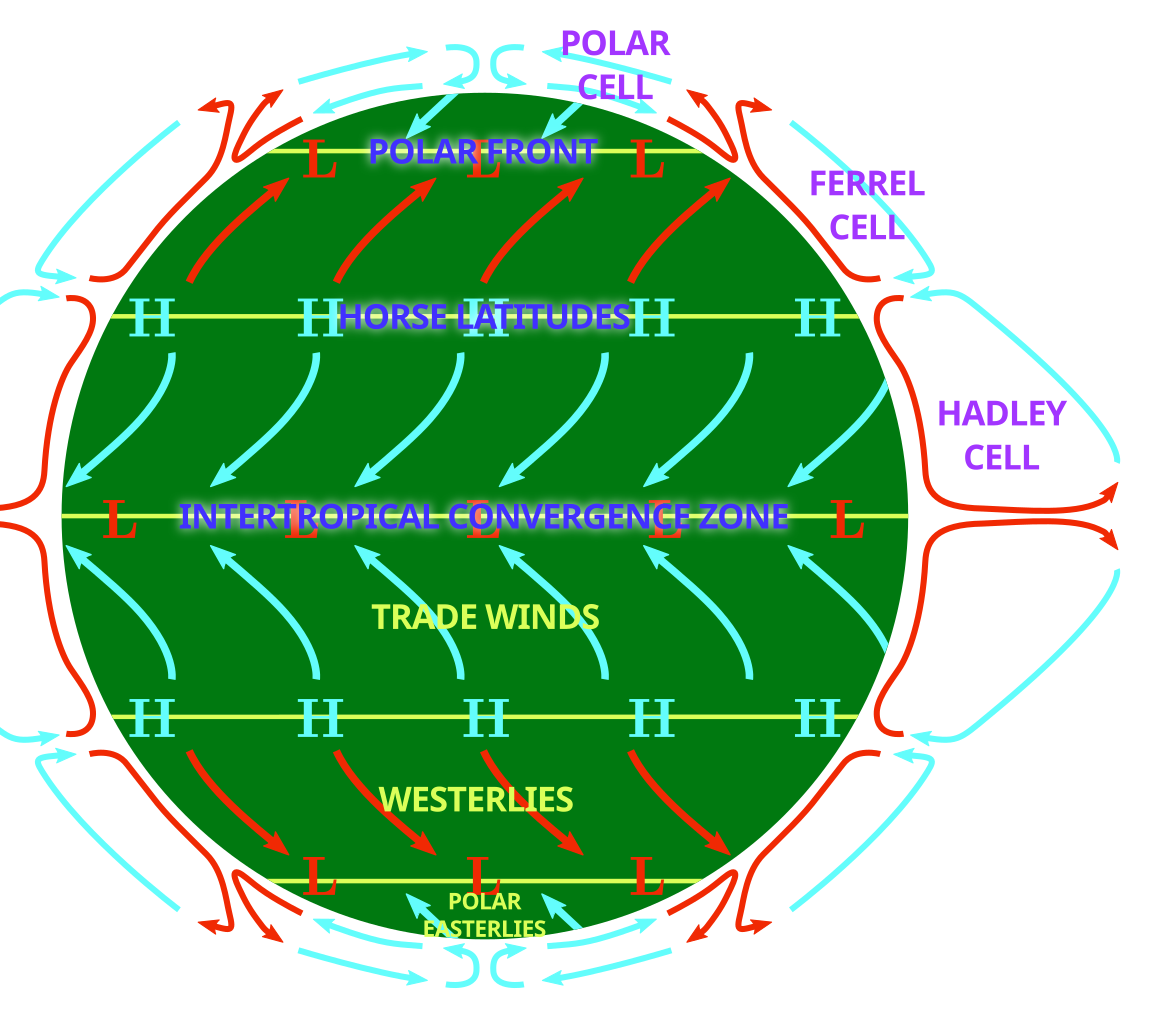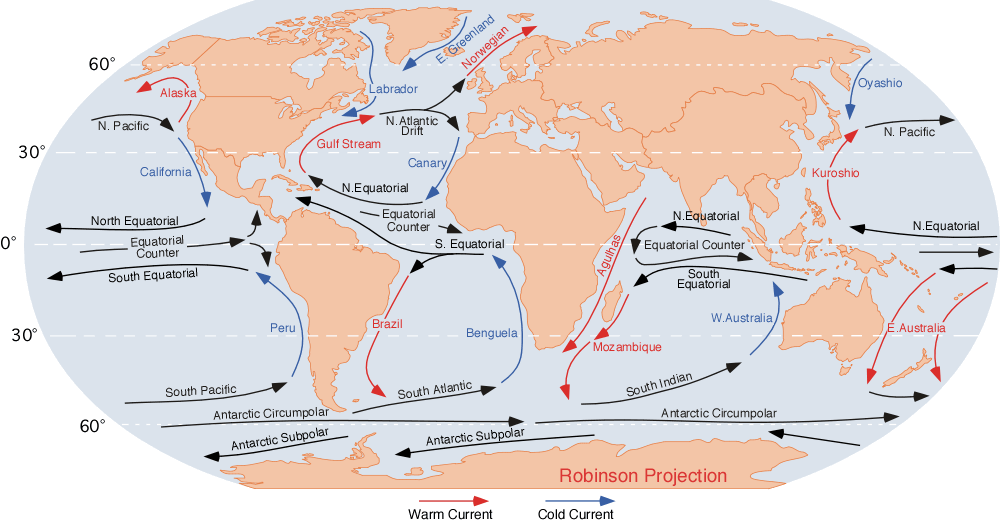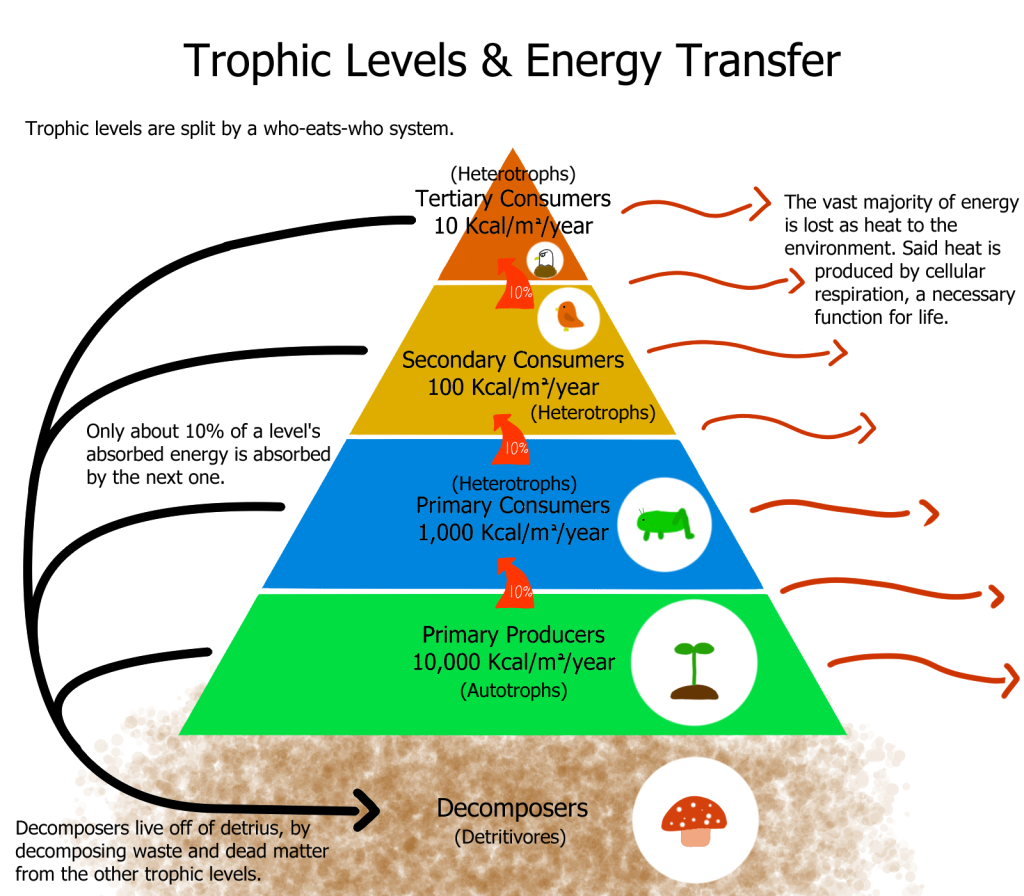Energy transfers are fundamental in understanding the intricate dynamics of environmental systems. These transfers are pivotal in determining how energy flows and is distributed within various ecosystems, directly influencing their vitality, biodiversity, and sustainability.
Types of Energy Transfers
Radiant Energy
Radiant energy is transferred in the form of electromagnetic waves. It is a significant element in the Earth’s energy balance and has a direct impact on climate and weather patterns.
Solar Energy: The Sun is a primary source of radiant energy, emitting vast amounts of light and heat. This energy is absorbed by the Earth’s surface, atmosphere, and oceans, driving various environmental processes. The absorption and reflection rates are influenced by surface colours, textures, and materials.
Reflection and Absorption: Different surfaces on Earth have distinct albedos, or reflection coefficients. Lighter surfaces reflect more solar energy, while darker surfaces absorb it, leading to heating of the Earth’s surface and atmosphere. This differential heating is foundational to many environmental processes, including the water cycle and atmospheric circulation.
Conduction
Conduction is the process where energy is transferred through matter from a region of higher temperature to a region of lower temperature, facilitated by the interaction of adjacent particles.
Soil and Rocks: The Earth’s crust is a significant medium for conduction. The varying thermal properties of soil and rocks influence the rate of energy transfer, affecting surface temperature and underlying geothermal activities.
Atmospheric Conduction: Although the atmosphere is generally a poor conductor of heat, conduction occurs near the surface, influencing microclimates and weather phenomena.
Convection
Convection involves the transfer of heat by the movement of fluids (liquids and gases) due to temperature differences, leading to the formation of convection currents.
Ocean Currents: The oceans are vast reservoirs of heat energy. Temperature differences between surface waters and deeper layers lead to the formation of convection currents, playing a crucial role in global climate regulation.
Atmospheric Circulation: Warm air, being less dense, rises and is replaced by cooler, denser air. This cyclic movement forms convection currents, driving wind patterns and weather systems globally.

Global atmospheric circulation illustrating convection: warm equatorial air rises, moves aloft, and descends at higher latitudes while cooler, denser air returns at the surface. The diagram labels Hadley, Ferrel, and Polar cells—extra detail beyond the basic convection concept but helpful context for wind patterns. Source.
Advection
Advection is characterised by the horizontal movement of energy due to the bulk movement of air and water masses.
Wind Patterns: Winds transfer heat and moisture horizontally across different regions, influencing local climates and weather conditions.
Ocean Currents: Similar to winds, ocean currents also contribute to advection, redistributing heat across various latitudes and longitudes, shaping coastal climates and ecosystems.

Global map of the major surface currents that advect heat horizontally across the oceans, forming subtropical gyres and connecting basins. Arrows indicate current directions; together these flows strongly influence regional climates and coastal ecosystems. Source.
Energy Efficiency
Definition
Energy efficiency is a measure of the effectiveness of a system in converting input energy into useful output. It underscores the capability of systems, from natural ecosystems to human-engineered ones, to utilise available energy optimally.
Factors Influencing Energy Efficiency
Technology: Technological innovations enhance energy conversion processes, reducing losses and improving output. The role of technology is particularly pronounced in human-engineered systems like power generation and transportation.
Material Properties: The thermal and electrical conductivity, reflectivity, and specific heat capacity of materials influence energy transfer rates and efficiencies.
System Design: The architecture and configuration of systems, including their complexity, integration, and adaptability, are pivotal in determining energy efficiency.
Improving Energy Efficiency
Innovation: The development and adoption of cutting-edge technologies and methodologies are central to enhancing energy conversion and reducing losses.
Optimisation: Fine-tuning existing systems and processes to minimise energy losses, including retrofitting and upgrading equipment and infrastructure.
Policy and Regulation: Governments and international bodies play a crucial role in setting standards, regulations, and policies that promote energy efficiency and conservation.
Entropy
Understanding Entropy
Entropy is a concept rooted in thermodynamics, denoting the level of disorder or randomness in a system. It is integral in understanding the quality and usability of energy during transfers.
Second Law of Thermodynamics: This law posits that the total entropy of a system and its surroundings always increases during energy transfers. It underscores the inherent inefficiency and energy dissipation in all natural and engineered processes.
Irreversibility: The concept of entropy underscores the unidirectional and irreversible nature of energy transfers, leading to energy degradation and loss.
Entropy and Ecosystems
Energy Flow: Energy becomes increasingly dispersed as it flows through an ecosystem’s trophic levels. Each transfer leads to energy loss, primarily as heat, reducing the energy available to subsequent trophic levels.

A trophic energy pyramid showing energy transfer from producers to higher consumers, with a proportion lost as heat at each level (increasing entropy). Some versions of this diagram include approximate percentages; treat these as illustrative rather than prescriptive for the syllabus. Source.
Heat Loss: Metabolic activities in organisms lead to significant heat loss, contributing to the increase in entropy. This heat is dissipated into the environment, underscoring the inefficiency of energy transfers.
Entropy and Sustainability
Resource Utilisation: Entropy is central to assessing the sustainability of energy resources. It underscores the inherent losses and the need for efficient resource management.
Efficiency Measures: Strategies to improve energy efficiency often aim to counteract the effects of increasing entropy. These include technological innovations, process optimisations, and policy interventions to enhance the sustainability of energy use.
Practical Implications
Energy Conservation
Energy conservation strategies are designed to mitigate energy loss and enhance efficiency, considering the intrinsic increase in entropy during energy transfers.
Insulation: Enhancing insulation in buildings and systems reduces energy loss through conduction, improving energy conservation.
Technology Upgrades: Implementing advanced technologies that are more energy-efficient helps in minimising energy waste and reducing operational costs.
Ecosystem Management
Understanding energy transfers, including energy efficiency and entropy, is essential for effective ecosystem management.
Trophic Efficiency: Ecosystem management strategies often focus on energy losses at each trophic level. Enhancing trophic efficiency can lead to increased productivity and biodiversity.
Habitat Restoration: Effective habitat restoration considers the energy flow and transfers within ecosystems. It aims to restore and enhance the natural processes that sustain healthy and resilient ecosystems.
In delving into energy transfers, the intertwined concepts of energy efficiency and entropy are pivotal. They shape our comprehension of energy movements and transformations and inform strategies for bolstering the sustainability of ecosystems and energy resources. These concepts are not just theoretical but have practical implications in areas ranging from environmental conservation to the engineering of efficient and sustainable energy systems.
FAQ
The increase in entropy during energy transfers within an ecosystem leads to a reduction in the quality and usability of energy available to organisms. As energy flows through the trophic levels, from producers to consumers and decomposers, a significant portion is lost as heat due to metabolic processes. This loss is a manifestation of increased entropy, where energy becomes more dispersed and disordered. Consequently, the energy that reaches higher trophic levels is less concentrated and of lower quality, limiting the amount of usable energy available to support growth, reproduction, and other vital biological processes.
Material properties are pivotal in determining energy efficiency during energy transfers. The thermal conductivity, reflectivity, and specific heat capacity of materials can significantly influence the rate and efficiency of energy transfer. For instance, materials with high thermal conductivity, like metals, facilitate rapid heat transfer, while insulating materials with low conductivity, like wood or foam, impede heat transfer, aiding in energy conservation. Similarly, surfaces with high reflectivity, such as snow or light-coloured roofs, reflect a significant portion of incoming solar radiation, reducing heat absorption and mitigating the urban heat island effect.
The design and configuration of a system are integral to its energy efficiency. Well-designed systems optimise the flow and utilisation of energy, minimising losses and enhancing performance. For example, in engineered systems like power plants or automobiles, design elements like the layout of components, material selection, and integration of technologies are meticulously planned to optimise energy conversion and reduce waste. In natural ecosystems, the arrangement and diversity of organisms, the structure of food webs, and the complexity of interactions influence the efficiency of energy flow and utilisation across trophic levels.
The principles of energy efficiency and entropy are instrumental in devising strategies to mitigate environmental challenges. Enhancing energy efficiency involves the optimisation of energy use, reducing waste, and conserving resources, which is crucial in addressing issues like climate change and resource depletion. For instance, energy-efficient technologies and practices in industries, transportation, and buildings can significantly reduce greenhouse gas emissions. The concept of entropy, highlighting the inherent energy loss in systems, underscores the need for sustainable energy sources and efficient utilization practices to compensate for energy dissipation, supporting the transition to a more sustainable and resilient energy future.
Advection and convection are both mechanisms of energy transfer, but they operate differently. Advection involves the horizontal movement of energy due to the bulk transfer of a fluid, such as air or water, from one place to another. It is particularly significant in the redistribution of heat across different geographical areas, as seen in ocean currents and wind patterns. Convection, on the other hand, is characterised by the vertical transfer of heat within a fluid, resulting from temperature differences that induce fluid movement. In convection, warmer, less dense fluid rises, and cooler, denser fluid sinks, forming convection currents, which are instrumental in atmospheric and oceanic circulation.
Practice Questions
Entropy is a measure of disorder or randomness within a system, and it is inherently linked to energy transfers in ecosystems. In the context of an ecosystem, entropy increases as energy is transferred through different trophic levels. This is primarily due to the second law of thermodynamics, which states that energy becomes more dispersed and disordered over time. For instance, in a food chain, as energy moves from producers to successive consumer levels, a significant portion is lost as heat due to metabolic processes. This loss illustrates the increase in entropy, where usable energy decreases and disorder increases.
Technology plays a crucial role in enhancing energy efficiency by reducing energy loss during transfers and improving the conversion of input energy into useful output. Innovations in technology lead to the development of more efficient machines, processes, and systems that are adept at minimizing energy waste. For example, the advent of LED lighting technology has significantly improved energy efficiency. LEDs convert a higher proportion of electrical energy into light, with minimal loss as heat, compared to traditional incandescent bulbs. This exemplifies technology’s role in enhancing the efficiency of energy transfers, reducing waste, and promoting sustainability.

